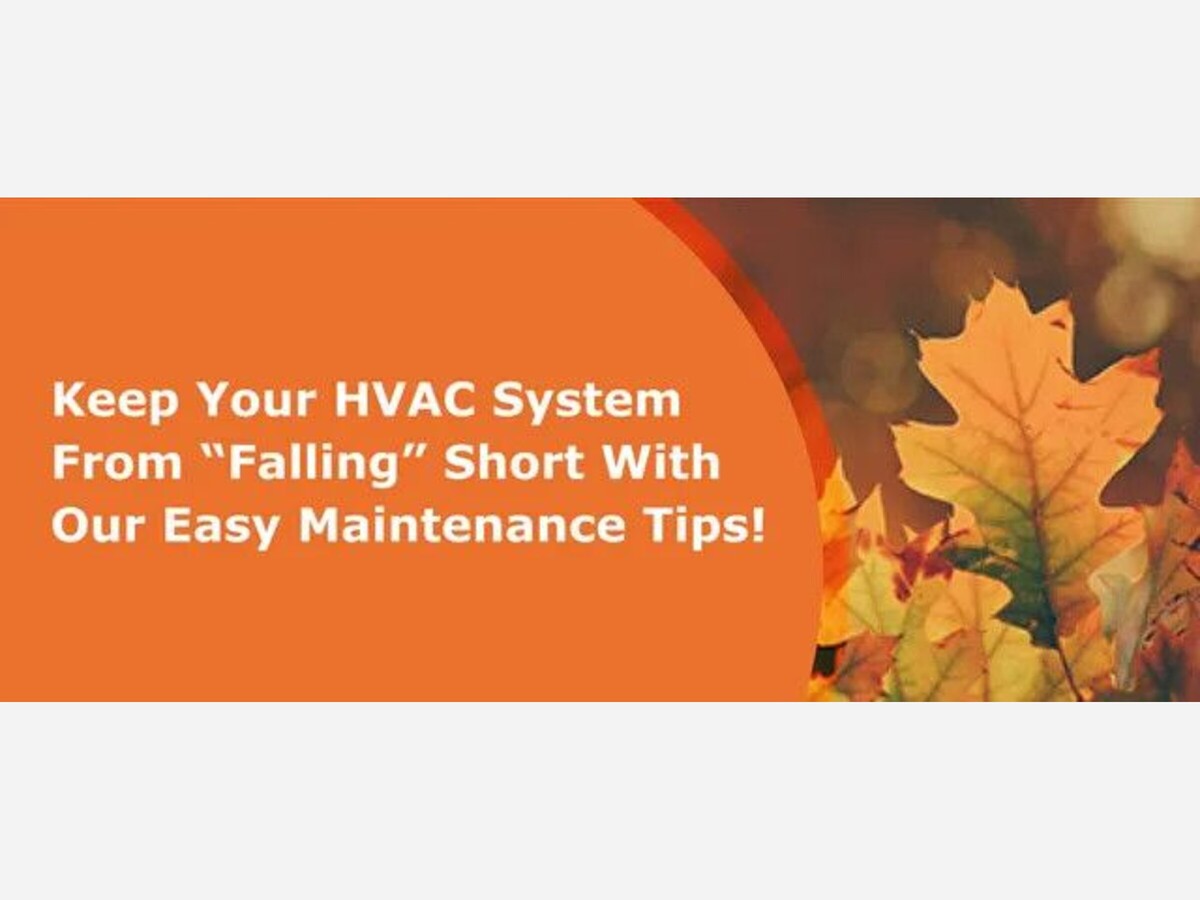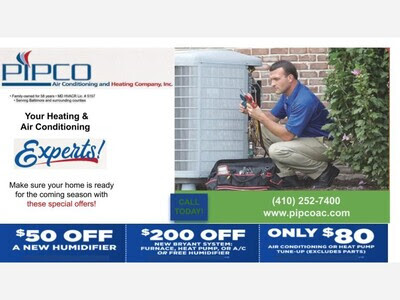Image

Prepare Your HVAC System for Fall
The fall season brings cooler weather to the Timonium area, which means winter and cold temperatures are right around the corner. While the weather is still nice, take time to prepare HVAC system for fall and the big job of heating your home once the seasons change.
PIPCO explains the steps to take to prepare your HVAC system for fall so it doesn’t feel like such a daunting task. The points below cover regular maintenance, changing air filters, protecting the air conditioning system, and solving performance flaws in HVAC systems that could lead to breakdowns this season. By performing these steps, you can keep your family safe and comfortable while improving the unit’s performance and making sure your heating system is operating correctly.
HVAC systems, both air conditioning and heating, require regular maintenance to protect the components of the HVAC unit and keep it working properly. Having a maintenance check-up performed by a licensed HVAC technician during the fall season will ensure your furnace, heat pump, or boiler is operating correctly with peak energy efficiency. This check-up also helps the unit get ready to take on the large task of providing enough warm air over the next several months.
An annual maintenance check from your HVAC company provides attention for all critical system components to boost the unit’s performance and prevent breakdowns that lead to costly repairs and a lack of heat in the dead of winter. Contact your HVAC company to schedule an HVAC maintenance checkup that covers tasks like:
When a yearly maintenance check up is completed by your HVAC technician, system issues can be identified and corrected before it’s time to turn on the HVAC unit when your home needs heat. This will help you avoid serious damage that could lead to costly repairs or a loss of heating when it’s cold outside.
Many HVAC companies offer maintenance plans to make it easier for you to prepare your HVAC system for both heating and air conditioning season. Joining one of these maintenance plans may also provide you with other benefits like priority maintenance tune up scheduling and discounts when you need to repair or replace HVAC systems.

If you noticed any comfort issues or performance problems with your furnace, heat pump, or boiler last winter or spring, it’s best to address them before the colder season arrives. By scheduling HVAC services and making repairs, you can rest assured that your heating system will be working properly once it comes time to turn it on for the season. Whether you didn’t get enough warmth in certain areas or if you hear unusual noises as the furnace runs, your technician will be able to get to the bottom of this issue. By performing diagnostics on your system, the technician will identify problems with parts or performance and implement solutions to solve these issues now. When you contact your HVAC company to request repairs, they are able to find and solve problems like a grounded or shorted wire, a bad ignitor that you should replace, dirty burners that need to be cleaned, and more – when left alone, these issues can cause energy waste that raises your energy bill and causes further harm to your heating unit.
Don’t put off making contact with the pros until cooler weather hits. Those first cold days are the busiest for HVAC professionals, as many homeowners forget to address heating problems beforehand. A lack of heat once the colder season arrives creates a panic and there is a rush to have repairs made – so you may be waiting longer if you don’t call in the fall.
Air filters tend to fill up quickly over the summer as the air conditioning unit runs heavily. If you don’t replace them, clogged filters will cause all sorts of problems with your heating system – they inhibit proper air flow, cause overheating, and waste energy, while inflicting damage on important system components.
Replace existing air filters with a new furnace filter before it’s time to use your heating equipment. This way, the system won’t suffer from a major airflow blockage and your unit will be working properly at maximum efficiency!
Homes with gas furnaces or boilers need to have carbon monoxide alarms installed in specific locations, at least one per floor of the house. Carbon monoxide is a dangerous gas that can be produced by incomplete fuel combustion. Problems like a crack in the heat exchanger or a blocked flue stops the safe venting of this gas to the outdoors and can cause it to find its way into your living areas – which could have deadly consequences.
Change batteries in all the home’s carbon monoxide detectors. Test the operation of each alarm by pressing the test button until it sounds. If the device does not produce a loud, steady alarm or if it is over 10 years old, you need to install a new one.

If it’s time to tuck in air conditioning equipment for a long winter’s nap or you just need to get your heat pump ready for heating season, care for the outdoor unit is essential. A good cleaning prevents airflow issues and damage to maximize efficient performance.
While there are air conditioner covers available to purchase on the market, it’s not essential to cover this unit for the winter. Air conditioners and heat pumps that sit outdoors are made to hold up against years of exposure to the sun, wind, rain, hail, heat, ice, and more without sustaining damage. If you want to use this type of product, just be sure to use it the right way – as you could risk damage to your air conditioner by using a cover improperly.
Install the cover when the unit is dry and secure it. You may also use a piece of cut plywood fit to the top of the unit and secured to protect against falling items and damage. Before it’s time to run your cooling system again in the spring, be sure to remove the cover – operating the air conditioner with a cover on could cause severe damage. You also want to remove covers when snow and ice start to melt to avoid trapping moisture inside the outdoor equipment, which could lead to mold growth on the coils.
Inspect areas throughout your house and fix air leaks to prevent drafts that cause heating loss and discomfort. Sealing these leaks and ensuring sufficient airflow will help your heating system run using less energy.
Serving the local community over 50 years. Contact PIPCO today.